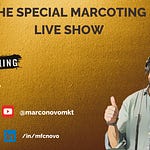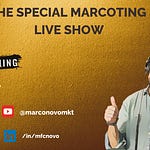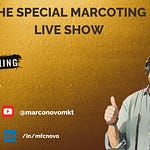The Complete Guide to Mastering Live Event Production in the Digital Age
In today's digital landscape, live streaming events have become an essential tool for businesses and content creators looking to expand their reach, build authentic connections, and create repurposable content. Yet many approach virtual events with trepidation, unsure of the process or intimidated by the technical aspects.
Recently, I had the pleasure of speaking with
a professional producer, event strategist, and self-described "energy giver" who brings her expertise to events both behind the scenes and on-camera. Together, we explored the world of live event production, breaking down the why, how, and what of creating successful virtual experiences.This comprehensive guide will walk you through everything you need to know about producing professional live events, from strategic planning to technical execution and speaker preparation.
Why Virtual Events Matter: Accessibility and Multiple Touch Points
Live streaming offers two critical advantages that traditional in-person events can't match: accessibility and versatile content distribution.
"Accessibility is one major thing," explains Marissa. "I live in a smaller town outside of Nashville. As far as getting to in-person events and making sure that people are being shared information, whether it's to develop their career or something that's valuable in the space of the industry that they're in, they can't always go to the event."
The reality is that many potential attendees face barriers to in-person participation:
Inability to find childcare
Limited time off work
Travel constraints
Budget limitations
Virtual events democratize access to valuable content that "could potentially change their life or help them level up," as Marisa points out.
Beyond accessibility, live streaming creates multiple touchpoints with your audience. In today's marketing landscape, prospects need 12-15 exposures to your brand before making a purchase decision—a significant increase from the 5-6 touch points of years past.
"You can't keep doing an event every day," Marisa notes, highlighting the practical impossibility of continuous in-person events. Virtual content, however, lives on. A single live stream can be repurposed into numerous content pieces, creating those essential touchpoints while maximizing your content investment.
Starting Your Live Event Journey: Strategy Before Technology
For those new to live streaming, the initial question is often simple: where do I begin? According to Marisa, the answer isn't about equipment or platforms—it's about intention.
"When I first start in any event and any project, it's what's the intention and what is your purpose, and what is your goal?" she emphasizes. This foundational step is crucial yet frequently overlooked as people rush to technical solutions.
Before purchasing a microphone or selecting a streaming platform, consider:
What are you trying to achieve with your live event?
Who is your target audience?
Where will you stream the content?
How long will the event run?
What visual branding elements should be incorporated?
How will you repurpose the content afterward?
Marisa cautions against the "just go live" mentality without proper planning: "If you intend to use it in the future, as far as long-form content that can be repurposed, I personally wouldn't help someone do that unless we are aligned on the end goals."
Think of virtual event planning like website development—you could generate a site with AI in a day, but without strategic thought, how effective will it truly be? Similarly, your "prompt" for your show—its purpose, structure, and goals—needs careful consideration before addressing technical aspects.
The Run of Show: Your Live Event Roadmap
One of the most valuable tools in live production is the Run of Show document—sometimes called a show flow, agenda, or timeline. This comprehensive roadmap serves as the single source of truth for everyone involved in your production.
"When you're working with different entities, like let's say a virtual event has an AV team, a producer, a community engager, and then all the speakers, you need to have a run of show so that people are learning how the flow is going to go without questions," Marisa explains.
A well-crafted Run of Show typically includes:
Precise timing for each segment
Speaker transition details
Technical cues
Content changes
Breaks and intermissions
Contingency plans
Even for smaller events, this document creates clarity and prevents confusion. "It's just very simple to get people on board so they're not standing there wondering what's going on," says Marisa.
The Run of Show document isn't just an organizational tool—it's a stress reducer. When everyone knows exactly what happens when, they can focus on delivering their best performance rather than worrying about logistics.
Professional Presentation: The Speaker's Responsibility
Live events—whether virtual or in-person—reflect not just on the host but on every participant. For speakers, this means understanding that their appearance on a livestream directly impacts their professional image and digital footprint.
A common mistake Marisa observes is speakers treating virtual events too casually: "I think there are some speakers that equate being on a virtual event to showing up to a Zoom in their bedroom… I've seen a livestream with someone who had a pile of dirty laundry behind them."
This casual approach undermines both the event's credibility and the speaker's reputation. Professional presentation in virtual environments includes:
A clean, appropriate background
Professional attire (at least from the waist up)
Proper lighting that illuminates your face
Clear audio without background noise
Camera positioned at eye level
Engagement with the audience through eye contact with the camera
Remember that virtual events create permanent content that may represent you indefinitely online. As Marisa notes, "It is important to your digital presence because you don't know who's watching."
The Energy Factor: Bringing Life to Virtual Events
Perhaps the most challenging aspect of virtual events is recreating the energy and engagement of in-person gatherings. Without a physically present audience, energy must be deliberately cultivated and projected.
"I see a lot of events where the energy just doesn't come through the camera or people are very stiff," Marisa observes. This energetic disconnect can significantly impact audience retention and engagement.
Energy problems typically manifest in several ways:
Flat, monotone delivery
Rigid body language
Limited facial expressions
Poor audio quality that muffles enthusiasm
Technical distractions that break engagement
As Marisa emphasizes, "How we show up on camera is really important, just as much as we show up in person." This means being intentional about projecting energy, enthusiasm, and authenticity through the digital barrier.
For hosts and presenters, this might require more animated gestures, varied vocal delivery, and deliberate engagement tactics than would be necessary in person. Remember that the camera tends to flatten energy—what feels slightly exaggerated to you often appears just right to viewers.
Conclusion: The Future Is Hybrid
Virtual events aren't meant to replace in-person gatherings—they complement them. As we navigate a post-pandemic world, the most effective approach combines the intimacy of physical presence with the accessibility of digital delivery.
"I'm a big proponent of getting back in person," Marisa shares, "but it looks different now. It's a lot more like boutique-style events… smaller rooms of even fifty to a hundred people where you can have good intentions."
This hybrid approach maximizes both worlds: creating meaningful in-person connections while extending reach through virtual participation and content repurposing.
The key to success in live event production isn't choosing between virtual and physical—it's understanding the strategic purpose of each and implementing with intentionality and professionalism. By starting with clear goals, creating detailed planning documents, maintaining professional standards, and bringing genuine energy to your presentations, you can create virtual events that truly connect with audiences and drive meaningful results.
Ready to elevate your live streaming strategy? Begin by defining your purpose, then let that guide every technical and presentation decision that follows.














Share this post